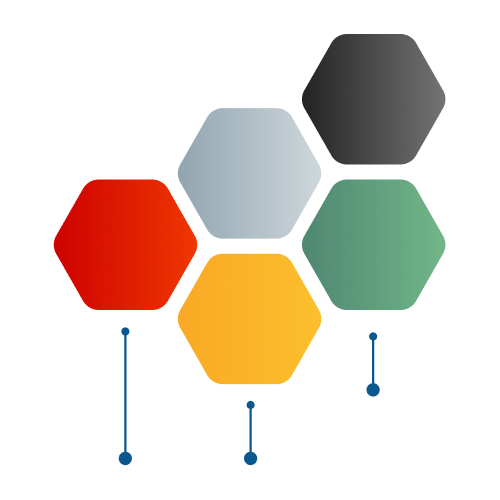Fundamentals of Lean Online Training Features
- $249 Special Pricing for the Fundamentals of Lean course
- Access to digital slides
- Ability to sign up at a later date for the full set of Lean Agent Certification courses.
- Once we process your payment, we will provide you with your personal online training account.
Contact us if you have additional questions.
Online Program Includes:
- 6 months of access to OpEx Learning Online program materials
- Online Exams and Quizzes
- Access to digital slides
Course Add-on Options
- Project Certification is a requirement to be a Certified Lean Agent, and can be obtained for an additional charge of $200. This includes two hours of remote project mentoring from the Master Black Belt and Lean Agent, project review for proper application of concepts, and certification.
Online Program Requirements
- A computer (device) with online access to the Internet
- Sound card and speakers
- Display settings of at least 1024 x 768 screen size
- Access to Microsoft Office 2000 or newer or equivalent
- You are not to provide your login information to other users. Your online account is for your personal use.
- Please note there are no refunds once the program has been started or seven days after purchase.
Fundamentals of Lean Course Topics
Approximate course completion time: 20 hours (not including 8 hours of Lean Introduction)
- Lean Introduction – Theory & QuizThis section covers the history and background of Lean, starting with Henry Ford up through Toyota, including what it is and what it is not. You will learn about organizations that have successfully implemented Lean. We will discuss how Lean works in manufacturing and non-manufacturing environments, helping you see the hidden waste. You will also learn about the 5 lean principles of Value, Value Stream, Flow, Pull and Perfection. You will understand how variation and waste leads to process excellence, why improvement initiatives fail, and the House of Lean that describes the core Lean leadership principles needed for success. We will also discuss the importance of developing a learning organization, and watch a video of a morning meeting at FastCap.
- Principles of Lean and A3 Thinking – Theory & QuizThis section reviews the 5 lean principles, and introduces the Lean Triad, called the 3 M’s (Muda, Mura, Muri). You will also learn about different problem solving processes like Plan-Do-Check-Act and the 8-Step Problem Solving Process. You will learn how to communicate and organize your problem solving progress onto one sheet of paper, called an A3.
- Kaizen – Theory & QuizThis section introduces the Japanese word “kaizen” which means incremental and continuous improvement of our processes. Kaizen can be done in our own work areas to save ourselves time and effort, while improving the quality of our work. We introduce a methodology called Kaizen Blitz which can be performed with a small team to make dramatic improvements to a targeted process, and is highlighted with a video. We also explain the popular kaizen event format, which is a multi-day session that brings together a team of people across multiple process areas to streamline the entire system. We share a video of a value stream mapping event, which follows the kaizen event format. We end the session with a discussion on a Lean Project, which is used for larger improvements that can take 3-6 months to complete.
- Foundation of Lean: Waste – Downloadable Resource, Theory & QuizOne of the first ways to improve your process is to notice and identify the 3 M’s (Muda, Muri and Mura). We start with Muda, learning the 8 different types of waste, summarized by the acronym DOWNTIME. We will explain each of the 8 wastes, and give examples across multiple industries and sectors. We go through the other two M’s (Muri and Mura) and end with a video exercise of someone making toast, where you can practice spotting waste in the process.
- Lean Case Studies – Theory & QuizThis section covers a few case studies across different sectors. We’ll take a look at the Province of Saskatchewan and how Lean applies to a government agency. Then we’ll look at a nonprofit, Saint Bernard Project, and how they used Lean to rebuild more homes. Next, we’ll look at Pierson Workholding, a small CNC manufacturer, to learn how they adopted Lean into their processes. Finally, we’ll look at the health care industry at the Virginia Mason Institute, an early adopter of Lean.
- 5S Workplace Organization – Theory & Quiz5S is an improvement methodology used early in process improvement to establish better organization, better visual management and structure. It represents 5 steps that start with S: Sort, Set in Order, Shine, Standardization and Sustain. We walk you through each of the steps, discuss keys to a successful 5S implementation, watch a summary video from a healthcare clinic, and walk through a numbers game that reinforce the 5S principles.
- Define Value – Theory & QuizIn order to determine what improvements we want to make, we must ensure we understand who our internal and external customers are, and what they value. This module will introduce methods for gathering the Voice of the Customer (VOC), comparing it to the Voice of the Business (VOB), and aligning it to True North. We will also explain how to use Lean to increase profits through cost reductions, not price increases.
- Lean Principle – Mapping the Process – Theory & QuizOne of the first major steps in improving a process is to understand the current process in great detail. We can capture the current state using various types of process maps, such as a SIPOC diagram, flow charts, swim lane maps, spaghetti diagrams and value stream maps (VSM). We deep dive into a VSM to understand the four elements (material and information flow, timeline and data boxes), different states of a VSM (current, ideal and future), and review common VSM symbols and metrics used in a VSM. We provide a roadmap on how to create a VSM, along with some examples and best practices.
- Process Measures and Data Display – Theory & QuizIn this section, we will discuss different types of data, along with commonly used metrics to measure the efficiency and performance of your processes, such as yield, process cycle time, takt time, queue time, changeover time, work time vs calendar time, lead time, and the theory behind Little’s Law. We will also discuss some simple ways to represent and summarize your data using charts and graphs such as a bar chart, time series plots and Pareto charts.
- Root Cause Analysis – Theory & QuizBefore we come up with countermeasures and potential solutions to our problems, we first need to make sure we are addressing the root cause of the problem, not the symptoms of the problem. We will provide some definitions of a root cause and a point of cause, and why we need to get beyond fire fighting in our organization. We will cover 3 commonly used tools that can help you get to the root cause: 5 Why’s, Cause Tree and the Fishbone (Cause and Effect) Diagram.
- Lean Principle – Create Flow – Theory & QuizEstablishing consistent flow of work in a process is critical to operational excellence. Once we start working on an order or customer request, the goal is to never stop working on it until it is complete. Everytime it stops or gets put aside, we have disrupted the flow. This section covers techniques to improve the flow in a system using techniques such as a Spaghetti Diagram, calculating takt time and pitch, workload balancing, escalating problems using andon and other triggers, and reducing setup time with rapid changeover methods.
- Lean Principle – Establish Pull – Theory & QuizOnce you have established good flow in your process, we can transition away from a push system to a pull system, where work is done only when a trigger is given from the next step. We will explain the differences between a push and pull system, why a pull system is better, and different types of methods for implementing pull. Methods include WIP Capacity, Kanban, 2-Bin Replenishment systems and other signaling devices. We share a few video examples of different types of kanban systems, and review an equation for calculating the correct kanban sizes.
- Mistake Proofing – Theory & QuizTelling employees to be more careful or adding inspection after every step of the process is not an effective approach for reducing errors. Humans are going to make mistakes, so we need to plan for these mistakes, and come up with cost-effective devices that prevent the error or detect it right away (called Poka-Yoke devices). We will explain the cost of allowing errors to escape through your processes, and how to approach human errors in a positive way. You will learn about Shigeo Shingo and W. Edwards Deming and how they focused on reducing human errors. You will learn to identify “red flag” areas that are most prone to errors, and 6 mistake proofing principles you can consider when creating your own device.
- Pursue Perfection – Theory & QuizThe fifth principle of Lean is pursuing perfection, which drives the need to continuously improve. In this section, we will discuss how standardized work is a core foundation for improvement to hold the gains. We will discuss steps to create standard work, and show the benefits of standard work using the “Draw a Pig” exercise.
- Ideal and Future States – Theory & QuizIn this section, we will review Toyota’s True North concept, along with the Ideal State of a process (without waste and quick response). We will spend most of the module on the Future State of a process by discussing how to ask good questions using the 5 W’s, conduct a brainstorming session, and common strategies for improvement called ECRS (Eliminate, Combine, Rearrange and Simplify).
- Lean Six Sigma – Theory & QuizNow that you’ve learned about Lean, we want to introduce you to another popular improvement method called Six Sigma. We will introduce the process thinking approach of managing input variables instead of reacting to the output variables, and how Six Sigma focuses more intently on data collection and analysis. We’ll review the history of Lean and Six Sigma, how Lean and Six Sigma tackle improvements differently, how the number of process steps and process yield impact operational excellence, and how best to blend Lean and Six Sigma together to utilize the strengths of each method.
- Wrap Up – Theory & QuizIn this section, we will recap all the previous modules to tie all the concepts together.












